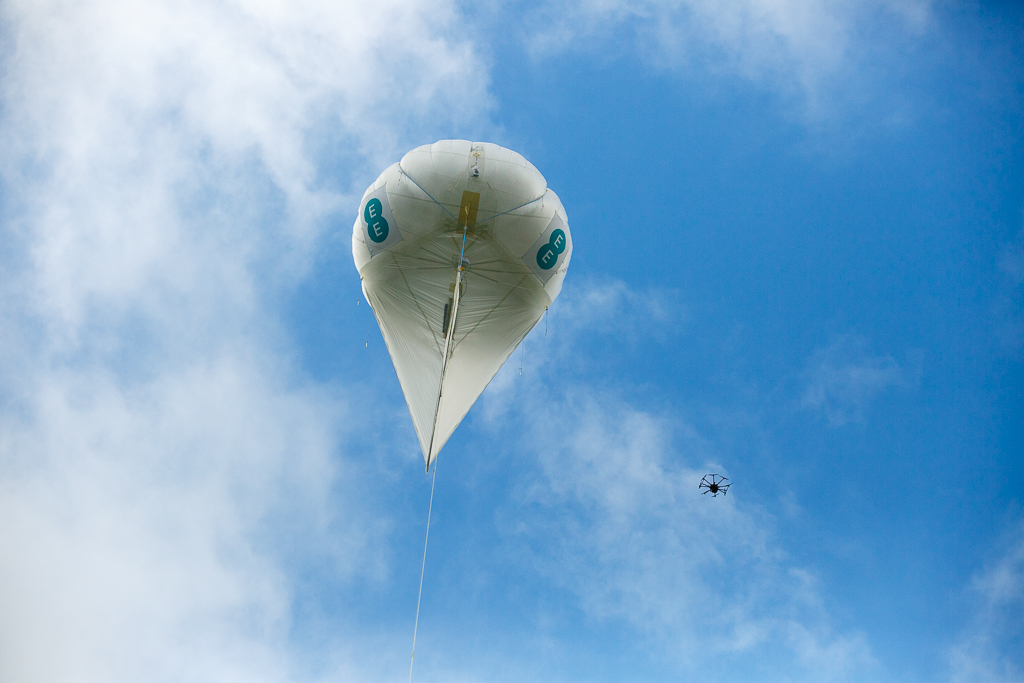EE balloons and drones to boost 4G coverage

Mobile carrier EE announced plans to deploy a fleet of helium balloons and drones to make 4G coverage more widely available.
The helium balloon, which EE calls a “Helikite,” has a tethered power supply, can remain airborne for up to a month and can cover a 5km radius. EE plans to use Helikites in rural areas where existing coverage is weak or non-existent, at venues and special events where 4G demand is high and in situations where existing infrastructure sustains damage.
The drones are more suitable for use in search-and-rescue operations, as they can only remain in the air for several hours and cover a radius of 2km.
In a press release, Marc Allera, CEO of EE, said: “We are going to extraordinary lengths to connect communities across the UK. Innovation is essential for us to go further than we’ve ever gone and deliver a network that’s more reliable than ever before. Rural parts of the UK provide more challenges to mobile coverage than anywhere else, so we have to work harder there – developing these technologies will ultimately help our customers, even in the most hard-to-reach areas.
“Looking ahead, I see innovations like this revolutionising the way people connect. We’re developing the concept of ‘coverage on demand.’ What if an event organiser could request a temporary EE capacity increase in a rural area or a climber going up Ben Nevis could order an EE aerial coverage solution to follow them as they climb? We need to innovate, and we need to think differently, always using customers’ needs to drive the way we create new technologies.”
EE expects to begin Helikite deployment later this year but did not announce an implementation schedule for the drones.
